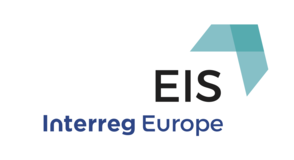

At the centre of the EIS project are several gatherings hosted by the different partner regions. They are called Interregional Learning Workshops and include a workshop, where Peer Reviews take place and Best Practices are discussed and presented. Main Stakeholders are encouraged to participate in the ILWs, especially from the regions that are being evaluated at the specific meeting.
At the end of the workshop, a partner meeting takes place between the partners in the EIS project in order to assess how the project is progressing and to agree on the next steps in the project development.
Peer Reviews are the core of the first phase of the EIS project, where all partner regions evaluate each other’s operational programmes for SME internationalisation.
The Peer Review process consists of five steps, of which the first three take place before the actual workshop:
The Peer Reviewed partner presents background material on a policy instrument for SME internationalisation to the other EIS partner regions.
The other partner regions critically examine the policy instrument and ask critical questions.
The Peer Reviewed partner region answers questions and explains the reasoning behind the policy instrument.
At the Interregional Learning Workshop, the Peer Reviewed region gives a presentation of step 1-3 and designs a workshop where strengths, weaknesses, opportunities and threats (SWOT) are identified in relation to the policy instrument under scrutiny.
The discussions from Peer Review are gathered and concluded upon, and the output forms the basis for the Best Practices and the Action Plan.
Each partner region has identified a group of main stakeholders. These groups consist chambers of commerce, trade associations, etc., who are part of the regional business support system for internationalisation of SMEs in the respective regions. The engaging of stakeholders from an early point in the process ensures that the implementation and the Action Plans are as successful and impactful as possible.
Each partner region identifies Best Practices from its own regional initiatives and programmes presented and Peer Reviewed by the partner regions. All Best Practices (21 at least) will stand as case examples of how to tackle different barriers to internationalisation for SMEs in the second phase of the project.
The Six-Step Model of Internationalisation is a tool to assess whether an SME is ready to internationalise. The Model is developed by Moberg & Palm in 1995, and describes the process of internationalisation in six steps (see figure below).
The Model serves as a framework for understanding the different SME internationalisation programmes presented by the partner regions. Not all programmes address all the aspects, and it is very useful to understand which part of the process they address.
The EIS partners apply the Six Step Model as a flexible process, where they decide whether to use it step by step or just the steps relevant to them.
Based on the findings and results during the first phase of the project, each partner region will develop and implement an Action Plan to improve the policy instruments in their regions. The Action Plan will be implemented in the second phase of the project (2019-2021).
The EIS Tool will be developed following the structure given by the Six-Step Model of Internationalisation. It will serve as a manual or checklist, ensuring standardised, structured and transparent support for regional SMEs in their internationalisation activities.
The beneficiaries of the application of the EIS Tool are the regional SMEs in the EIS partner regions. The EIS Tool will be applied by the service providers and give systematic and collaborative support and mentoring to the individual SME in its process of internationalisation. The EIS Tool will be an instrument for the regional economic policy makers and authorities, who are responsible for the coordination of regional services providers – at least for those who are running services co-financed with public money from the region or local. Due to a collaborative approach with high transparency of the offered services, each regional SME can be supported in an effective and efficient way.
The EIS Tool ensures that the learnings from the project will not only serve the participating partner regions in the project, but that it will also be disseminated to other regions and support the development of their SME internationalisation programmes.